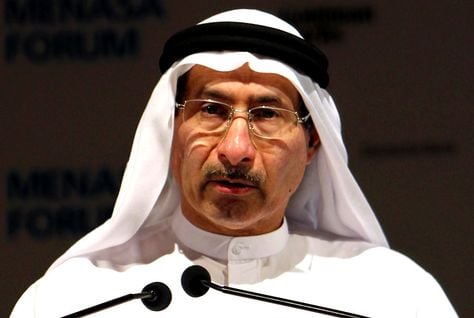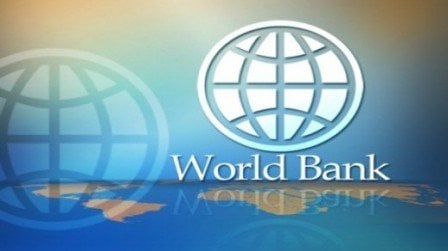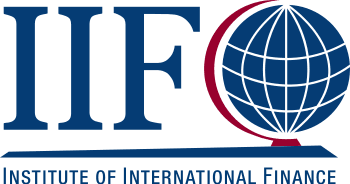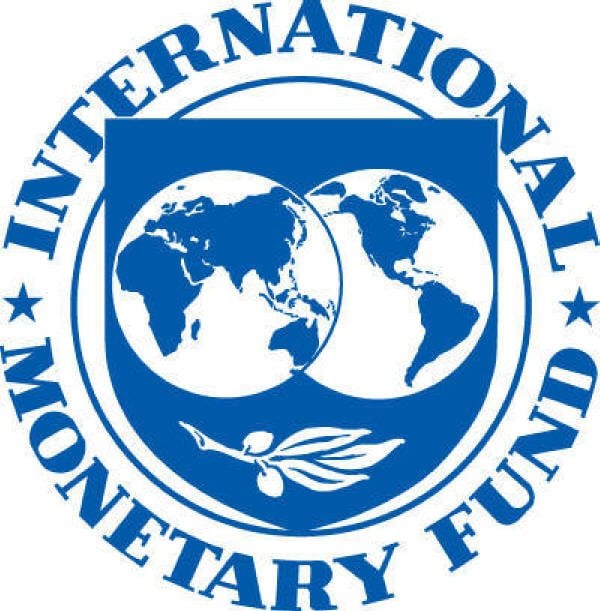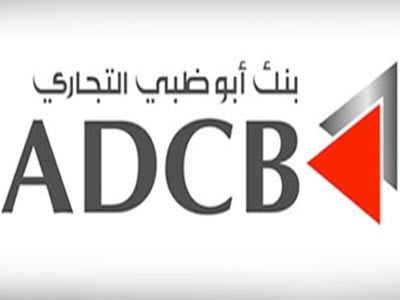Mehmood Ul Hassan Khan
Latest reports of the International Monetary Fund (IMF), World Bank (WB) and other regional banking and financial institutions strongly highlight the excellent soundness of UAE banking and financial systems. Despite banks and financial institutions around the globe are at their lowest ebbs, banking and financial systems of the UAE has succeeded to marginalize the bad effects of it. It is strong and stable. It is restructured and resilient. Timely effective policy measures of its central bank successfully lessen the bad ramifications of the regional turmoil and global economic recession and financial crunch.
In this connection, the Institute International Finance (IIF) report indicates that UAE banks emerged as the strongest financial institutions in the GCC in terms of capital adequacy. The report observed capital adequacy in the UAE, which controls the largest Arab banking system by assets, stood at as high as 20.8 per cent at the end of 2011.
QNB report (2012) also endorses that the UAE banks have the largest share of banking assets in the GCC that increased by 8.9 percent in 2011 to US$1.46 trillion, equivalent to 106 percent of regional GDP. Moreover, the UAE banks account for 31 percent of the total assets in the GCC. The report indicated that the UAE has the highest level of domestic loan penetration, 78 percent of GDP, primarily as a result of extensive lending to all the productive sectors of the economy. The recently published report of the National Bank of Kuwait, NBK also endorses this view.
According to central bank annual report (2011), its total foreign currency assets increased from AEDs 153.4 billion in 2010 to AEDs 169.4 billion in 2011. Its investments abroad in highly rated securities, government bonds and treasury bills surged to AEDs 68.4 billion in 2010 to AEDs 72.3 billion in 2011. Deposit account, cash with banks abroad and loans to banks against certificate of deposits registered upward development from AEDs 47.8 billion in 2010 to AEDs 59.0 billion in 2011. Its investment in local government bonds remained unchanged i.e. from AEDs 36.7 billion in 2010 to AEDs 36.7 billion in 2011. Central bank other foreign assets grew from AEDs 0.5 billion in 2010 to AEDs 1.4 billion in 2011. Last but not the least, its earnings for the year from treasury operations increased from AEDs 1.2 billion in 2010 to from AEDs 1.3 billion in 2011.
According to the annual report of the UAE central bank (2011), the number of locally incorporated commercial banks stood at 23 during 2011, while the number of their branches increased from 732 at the end of December 2010 to 768 at the end of December unchanged 2011, and the number of their electronic/customer service units remained at 26.
Current published report of its central bank showed deposits at the UAE banks increased 1.1percent during the August 2012 to reach at Dh1.127 trillion. Total bank assets increased by 0.5 per cent to reach Dh1.733 trillion.
(January01, 2012 to August 2012)
Description % Details
MO Currency in circulation and currency at banks 1.1 increased Dh55.1 billion at the end of July 2012 to Dh55.7 billion at the end of August 2012
M1 Combination of currency in circulation plus monetary deposits, current accounts and call accounts at banks 0.5 decreased Dh286.4 billion at the end of July 2012 to Dh285.0 billion at the end of August
M2 Comprises of M1 and quasi-monetary deposits, resident time and savings deposits in Dirhams, commercial prepayments in Dirhams and resident deposits in foreign currencies 0.3 increased Dh835.0 billion at the end of August of the same year. UAE bank deposits rise 1.1% to Dh1.127t in August
Source: UAE Central Bank (October, 2012)
Another latest monthly bulletin of the UAE central bank showed its assets increased by nearly Dh17 billion in the first eight months of 2012 and the bulk of the increase was in deposits with other banks and held-to-maturity securities. It indicated total assets surged to one of their highest levels of about Dh250 billion at the end of August, 2012 from around Dh234.2 billion at the end of 2011. The Central Bank’s deposits with other banks also grew by 15 percent to around Dh34.6 billion from Dh30.1 billion in the same period.
On the liabilities side, the report showed the Central Bank’s capital and reserves was down from around Dh20.5 billion at the end of 2011 to Dh18.08 billion at the end of August. On a monthly basis, the capital remained unchanged compared with July. Moreover, certificates of deposits issued by the Central Bank to local banks grew by around 5.7 per cent to Dh85.02 billion from Dh80.41 billion after climbing to their highest level of Dh173 billion at the end of 2007.
UAE central bank (October, 2012) says UAE banks, control the biggest asset base in the Middle East, boosted their net income by nearly 18.2 per cent in 2011 as they continued to pull out of the throes of the 2008 global financial distress. From around Dh22.5 billion in 2010, the net profits of the country’s 23 national banks and 28 foreign units registered increase nearly Dh26.6 billion in 2011. It was because of the increase mainly driven by a 3.8 per cent rise in banks’ net interest margins and a decline by around 6.9 per cent in interest expense. Due to its prudent banking reforms and financial policies the UAE banking system was able to maintain sound levels of profit even during periods of stress.
It showed banks were able to increase their interest income on deposits with banks abroad by nearly Dh3.2 billion in 2011, a whopping 200 per cent rise from the level a year before.
According to report, during the first four months of the year, banks’ deposits base increased by around Dh 80 billion, of which 28 per cent was government deposits. After April 2011, the flow reversed direction and slackened till November 2011 when deposits started to pick-up again.
Islamic Banking is also making its inroad in the domestic banking and financial systems of the UAE. National Bonds Corp, Dubai is of the opinion that Sharia compliance has been the number one driver of choice of savings instruments among Emiratis and Arab expats.
The National with the Middle East Investor Relations Society (Meirs) concludes that UAE has emerged as the leading financial centre in the GCC. The financial hubs in Abu Dhabi and Dubai scored 35.5 out of a possible 50 points based on five key criteria used by Meirs to evaluate shareholders’ standing in the six GCC countries. The five key Meirs criteria are: the regulators; jurisdictional issues in the country concerned; the stock exchanges; the capabilities of investor-relations departments; and the level of international investor interest in each market. The assessments were made by The National over a six-week period.
It finds that the UAE has sophisticated regulatory environment, highly developed financial infrastructure and a commercial legal system increasingly following rules of ‘international best practice’ are all viewed as the best in the region” by financial professionals.
The IMF said UAE banking system is stable and resilient. There was no liquidity crunch during 2011-2012. Its banking and financial system was remained free from distress. IMF stress test shows that UAE banking system could address moderate external liquidity shocks with its own resources. Moreover, its foreign reserves would be sufficient to address even a strong shock scenario.
According to the report, UAE banks have an average capital adequacy ratio of 20 per cent and a Tier 1 capital ratio of 15 per cent. The report said since 2008, the central bank and policy makers of the UAE have taken concrete measures to strengthen some of the weakness in the system due to which banks have been recapitalised and the capital adequacy ratio of the banking system has strengthened to 21 per cent. Furthermore, weaker financial institutions, including banks, have been merged with stronger institutions. The liquidity of the banking system has also improved as indicated by the steady decline in the loan-to-deposit ratio, from 108 per cent at end-2008 to 95 per cent at end-March 2011.
Central bank has been rigorously introduced meaningful measures and reforms in the banking and financial systems since 2008-09. Capping of bank’s lending to government bodies is a great policy measure. The central bank limits banks to lending a maximum of 100 per cent of their capital base to government entities, with no more than 25 per cent of a bank’s capital to be loaned to any individual government borrower. It also imposed a 100 per cent limit for lending to federal and emirate-level state-related enterprises, with a cap of 15 percent for funded exposure to individual borrowers.
Introduction of the insolvency laws are must for overhaul bankruptcy procedures in the country and achieve international standards.
An advanced system of internal reporting and early warning has been institutionalized by the UAE central bank since 2009. It has increased monitoring and supervision of the liquidity of individual banks and encourages to proactively managing liquidity risks. Provisioning of the loans has been monitored. Risk assessment culture has been institutionalized to conduct regular stress testing of the domestic banking industry. It is hoped that it would help further mitigate risks to the banking system and strengthen financial stability in the country.
The Arabian Business has issued a list which shows 14 UAE banks on the list of top 50 banks in the Gulf Cooperation Council (GCC). It is based on market value in which the highest ranked UAE bank is National Bank of Abu Dhabi, placed seventh with a market value of $8.71 billion.
UAE First Gulf Bank, Abu Dhabi Commercial Bank, Emirates NBD, Emirates NBD, Mashreq Bank, Abu Dhabi Islamic Bank, Abu Dhabi Islamic Bank, Dubai Islamic Bank, Union National Bank, National Bank of Ras Al Khaimah, National Bank of Fujairah, National Bank of Fujairah has market value US$ 6.900 billion, 5.179 billion, 1.964 billion, 2.991 billion, 2.015 billion, 1.964 billion, 1.888 billion respectively.
Conclusion
All the latest reports of all the international monetary agencies and research institutes verify UAE banking and financial system soundness. From onward, more focus should be given to develop domestic debt markets which would further facilitate banks liquidity management. It would help reducing reliance on foreign funding. Monitoring and supervision system hold the key of its banking and financial industry. Proper liquidity management must be developed for the introduction of the Basel III liquidity framework in the country.
